 W
WCaptain Edward Lyman Abbott was a Canadian multisport athlete, civil servant, and later a soldier. Abbott was considered a fine sportsman in Regina, Saskatchewan, and won national championships in ice hockey, and rugby football. He is the namesake of the Abbott Cup, and is honoured in the Saskatchewan Sports Hall of Fame. Abbott was a decorated officer in the Canadian Expeditionary Force, and died in action during World War I in France.
 W
WWallace Lloyd Algie, was a Canadian Army officer and a recipient of the Victoria Cross (VC), the highest award for gallantry in the face of the enemy that can be awarded to British and Commonwealth forces. A soldier with the Canadian Expeditionary Force during the First World War, he was posthumously awarded the VC for his actions on 11 October 1918, during the Hundred Days Offensive.
 W
WGeorge Harold Baker was a lawyer, political figure, and soldier from Quebec, Canada. He represented Brome in the House of Commons of Canada from 1911 to 1916 as a Conservative Member of Parliament.
 W
WJean Baptiste Arthur Brillant was a Canadian recipient of the Victoria Cross, the highest and most prestigious award for gallantry in the face of the enemy that can be awarded to British and Commonwealth forces.
 W
WHugh Cairns, was a Canadian recipient of the Victoria Cross, the highest and most prestigious award for gallantry in the face of the enemy that can be awarded to British and Commonwealth forces.
 W
WFrederick William Campbell was a Canadian Army Officer, and recipient of the Victoria Cross, the highest and most prestigious award for gallantry in the face of the enemy that can be awarded to British and Commonwealth forces.
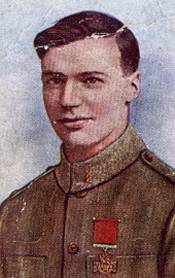 W
WLionel (Leo) Beaumaurice Clarke was a Canadian recipient of the Victoria Cross, the highest and most prestigious award for gallantry in the face of the enemy that can be awarded to British and Commonwealth forces.
 W
WRobert Grierson Combe, was a Canadian recipient of the Victoria Cross, the highest and most prestigious award for gallantry in the face of the enemy that can be awarded to British and Commonwealth forces. Combe is also considered Scottish since he was born in Aberdeen, Scotland.
 W
WJohn Bernard Croak VC was a soldier in the Canadian Expeditionary Force during the First World War and posthumous recipient of the Victoria Cross, the highest and most prestigious award for gallantry "in the face of the enemy" that can be awarded to British and Commonwealth forces. He earned the award for events that occurred during the Battle of Amiens in August 1918. A park and elementary school was named in his memory at Glace Bay, Nova Scotia.
 W
WThe Crucified Soldier refers to the widespread atrocity propaganda story of an Allied soldier serving in the Canadian Corps who may have been crucified with bayonets on a barn door or a tree, while fighting on the Western Front during World War I. Three witnesses said they saw an unidentified crucified Canadian soldier near the battlefield of Ypres, Belgium, on or around 24 April 1915, but there was no conclusive proof such a crucifixion actually occurred. The eyewitness accounts were somewhat contradictory, no crucified body was found, and no knowledge was uncovered at the time about the identity of the supposedly crucified soldier.
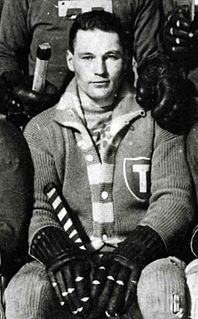 W
WAllan McLean "Scotty" Davidson was a Canadian ice hockey player and soldier. He was considered one of the top wingers of the game's early years. He led his Kingston junior team to two Ontario Hockey Association championships in 1910 and 1911, when he moved to Calgary for the 1911–12 season and led the Calgary Athletics senior team to the Alberta provincial championship. Davidson turned professional with the Toronto Blueshirts in 1912 and was among the National Hockey Association's leading scorers the following two seasons. He captained Toronto to the Stanley Cup championship in 1914.
 W
WAlexander Wuttunee "Alex" Decoteau, was a Cree Canadian track and field athlete, police officer and soldier. A member of the Red Pheasant First Nation, he joined the Edmonton Police in 1911 becoming the first Indigenous police officer in Canada. Decoteau was known for his athletic ability and his achievements in running. A holder of numerous long-distance records in Western Canada, he represented Canada in the 5,000 meters event at the 1912 Summer Olympics. Decoteau joined the Canadian Expeditionary Force in April 1915 and died on October 30, 1917, during the Second Battle of Passchendaele.
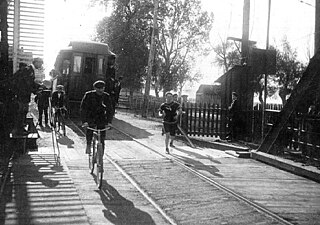 W
WJames Duffy was a distance runner from Canada, one of the world's best marathon runners at the beginning of the 20th century. He participated in the 1912 Summer Olympics in Stockholm and was the winner of the 1914 Boston Marathon.
 W
WFrederick Fisher, was a Canadian recipient of the Victoria Cross (VC), the highest and most prestigious award for gallantry in the face of the enemy that can be awarded to British and Commonwealth forces.
 W
WGordon Muriel Flowerdew was an English-born Canadian recipient of the Victoria Cross, the highest and most prestigious award for gallantry in the face of the enemy that can be awarded to British and Commonwealth forces, received for his actions at the Battle of Moreuil Wood.
 W
WFrederick William Hall, was an Irish-Canadian recipient of the Victoria Cross, the highest and most prestigious award for gallantry in the face of the enemy that can be awarded to British and Commonwealth forces.
 W
WAlexis Hannum Helmer was killed in battle during the Great War while serving with the 2nd Battery, 1st Brigade, Canadian Field Artillery. He is known as being part of the inspiration for In Flanders Fields through his friendship with John McCrae.
 W
WFrederick Hobson VC was a soldier in the Canadian Expeditionary Force, and recipient of the Victoria Cross, the highest military award for gallantry in the face of the enemy given to British and Commonwealth forces, during the First World War.
 W
WSamuel Lewis Honey, was a soldier in the Canadian Expeditionary Force, and posthumous recipient of the Victoria Cross, the highest military award for gallantry in the face of the enemy given to British and Commonwealth forces, during the First World War. He had already been awarded the Military Medal and Distinguished Conduct Medal for actions earlier in the war.
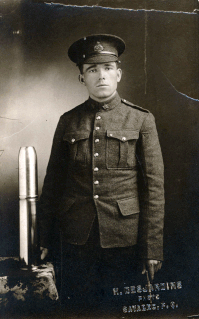 W
WJoseph Thomas Keable, VC, MM was a Canadian soldier during the First World War. Keable was a recipient of the Victoria Cross, the highest and most prestigious award for gallantry in the face of the enemy that can be awarded to British and Commonwealth forces. He was the first French Canadian soldier to be decorated with the VC and Military Medal.
 W
WGeorge William Kennedy was a Scottish footballer. He played at left half or centre half.
 W
WArthur George Knight VC was an English-Canadian soldier. Knight was a recipient of the Victoria Cross, the highest award for gallantry in the face of the enemy that can be awarded to British and Commonwealth forces. Knight was one of seven Canadian to be awarded the Victoria Cross for their actions on one single day, 2 September 1918, for actions across the 30 km long Drocourt-Quéant Line near Arras, France. The other six recipients were Bellenden Hutcheson, William Henry Metcalf, Claude Joseph Patrick Nunney, Cyrus Wesley Peck, Walter Leigh Rayfield and John Francis Young.
 W
WOkill Massey Learmonth, VC, MC, was a Canadian soldier. Learmonth was a recipient of the Victoria Cross, the highest and most prestigious award for gallantry in the face of the enemy that can be awarded to Commonwealth forces. Learmonth served in the Canadian army during World War I, and was awarded his medal posthumously for actions at the Battle of Hill 70.
 W
WFrancis Clarence McGee was a Canadian ice hockey player during the early days of hockey for the Ottawa Hockey Club, nicknamed the "Silver Seven". Though blind in one eye, McGee was a legendary player of his era, and known as a prolific scorer. He once scored 14 goals in a Stanley Cup game and eight times scored five or more. Despite a brief senior career — only 45 games over four seasons — he led the Silver Seven in its reign as Stanley Cup champions during this time (1903–1906), playing both centre and rover. During World War I, he enlisted in the Canadian Army and died in battle in France. When the Hockey Hall of Fame was founded in 1945, McGee was one of the original inductees.
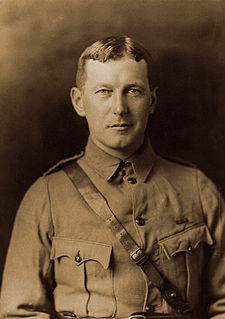 W
WLieutenant Colonel John McCrae, MD was a Canadian poet, physician, author, artist and soldier during World War I, and a surgeon during the Second Battle of Ypres, in Belgium. He is best known for writing the famous war memorial poem "In Flanders Fields". McCrae died of pneumonia near the end of the war.
 W
WHugh McDonald McKenzie was a Canadian soldier who served during World War I. McKenzie was a recipient of the Victoria Cross, the highest and most prestigious award for gallantry in the face of the enemy that can be awarded to British and Commonwealth forces. McKenzie received the award posthumously for his actions during an attack that took place during the Second Battle of Passchendaele in October 1917.
 W
WMajor-General Malcolm Smith Mercer was a Canadian general, barrister and art patron who practiced law in Toronto and led the 3rd Canadian Division during the first two years of the First World War before he was killed in action at Mount Sorrel in Belgium. Mercer was an experienced militia commander and had demonstrated a great flair with training and organising the raw Canadian recruits during the opening months of the war. He also demonstrated courage under fire, visiting the front lines on numerous occasions at the height of battle and personally directing his forces in the face of poison gas attacks and heavy shellfire.
 W
WWilliam Johnstone Milne VC was a First World War Canadian soldier. Milne was a posthumous recipient of the Victoria Cross, the highest and most prestigious award for gallantry in the face of the enemy that can be awarded to British and Commonwealth forces. He received the VC for his actions at the Battle of Vimy Ridge on 9 April 1917.
 W
WHarry Garnet Bedford Miner VC was a soldier in the Canadian Expeditionary Force during the First World War and posthumous recipient of the Victoria Cross, the highest and most prestigious award for gallantry "in the face of the enemy" that can be awarded to British and Commonwealth forces. He earned the award for events that occurred during the Battle of Amiens in August 1918. There are two plaques in his memory in his hometown, Cedar Springs, Ontario and his medals are displayed in a local museum.
 W
WCaptain Percival Talbot "Percy" Molson, MC was a Canadian star athlete and soldier. After an outstanding sports career with McGill University, Molson joined its administration. Molson died fighting in World War I. In his will, he donated funds for McGill to build its football stadium, named Percival Molson Memorial Stadium in his honour.
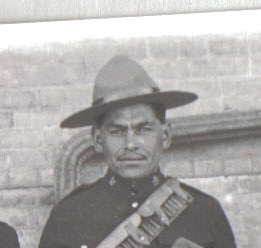 W
WHenry Louis Norwest (Northwest) MM & Bar was a distinguished Canadian sniper in World War I.
 W
WClaude Joseph Patrick Nunney was a Canadian soldier. Nunney was a recipient of the Victoria Cross, the highest award for gallantry in the face of the enemy that can be awarded to British and Commonwealth forces. Born in Hastings in East Sussex, he was sent to Canada as a home child.
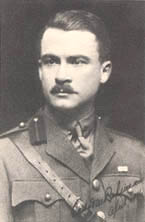 W
WMajor Talbot Mercer Papineau, MC was a lawyer and decorated soldier from Quebec, Canada.
 W
WJohn George Pattison was a Canadian soldier. Pattison was a recipient of the Victoria Cross, the highest and most prestigious award for valour in the face of the enemy that can be awarded to British and Commonwealth forces.
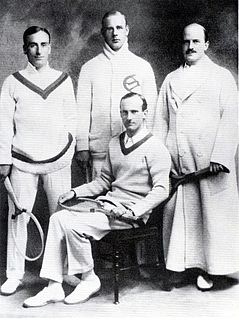 W
WRobert Branks 'Bobby' Powell was a male tennis player from Canada.
 W
WPrivate George Lawrence Price was a Canadian soldier. He is traditionally recognized as the last soldier of the British Empire to be killed during the First World War.
 W
WCaptain George Taylor Richardson was a Canadian ice hockey player, businessman, and later a soldier. Richardson played hockey for Queen's University and the 14th Regiment of Kingston, and was considered one of the finest amateurs of his time. He is enshrined in the Hockey Hall of Fame, and is the namesake of the George Richardson Memorial Trophy. Richardson was part of a prominent business family that owned and operated a grain processing business in Kingston, Ontario. He joined the Canadian Expeditionary Forces in World War I, and died in action in Belgium.
 W
WJames (Jimmy) Cleland Richardson VC was a Canadian recipient of the Victoria Cross, the highest and most prestigious award for gallantry in the face of the enemy that can be awarded to British and Commonwealth forces.
 W
WJames Peter Robertson was a Canadian recipient of the Victoria Cross, the highest and most prestigious award for valour in the face of the enemy that can be awarded to British and Commonwealth forces.
 W
WJoseph Alexandre "Patsy" Séguin was a Canadian professional ice hockey player. He played two games with the Montreal Canadiens of the National Hockey Association in the inaugural 1910 season, and scored one goal for the club. He was killed in action while serving in World War I in the Battle of Amiens.
 W
WEllis Wellwood Sifton was a Canadian soldier. Sifton was a recipient of the Victoria Cross, the highest and most prestigious award for gallantry in the face of the enemy that can be awarded to British and Commonwealth forces.
 W
WRobert Spall, was a Canadian recipient of the Victoria Cross, the highest and most prestigious award for gallantry in the face of the enemy that can be awarded to British and Commonwealth forces.
 W
WJames Edward Tait, was a Scottish/Canadian recipient of the Victoria Cross, the highest and most prestigious award for gallantry in the face of the enemy that can be awarded to British and Commonwealth forces.